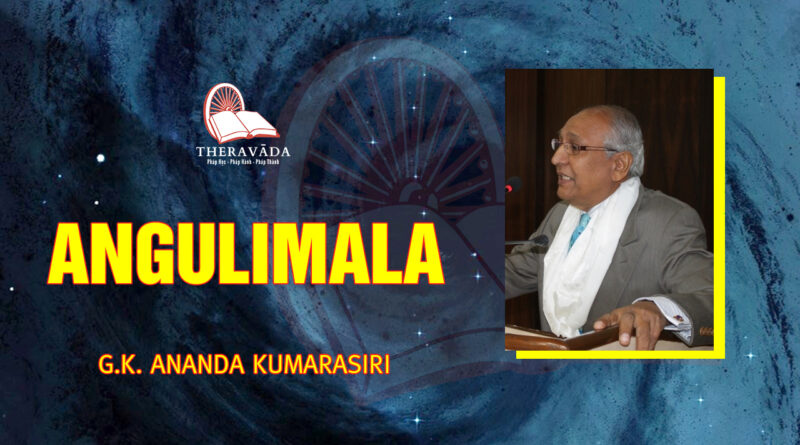By G.K. Ananda Kumarasiri
Angulimala Real Life Story
The dramatic story of Angulimāla’s dual transformation from a diligent, virtuous student to a notorious serial killer, and once again, into a compassionate, spiritually perfect Arahant has been retold millions of times for over two thousand six hundred years. It has never failed to evoke powerful emotions in the reader or listener, both young and old. This pres- entation of “Angulimāla” is designed to cater to a wide readership, ranging from young children, teenagers to adults.
Parents can introduce the moral lessons of the story of Angulimāla to their children as young as three years old, by reading, in sequence, the cap- tions under each of the illustrations. The illustrations themselves unfold the life-episode of Angulimāla to the child. As the famous Chinese philosopher, Confucius once said, “a picture is worth a thousand words”; the child can thus better grasp the essence of the story through the graphic illustrations provided. Parents can use them to narrate in simple language the sequence of events and happenings of the legendary story and the moral lessons to be drawn.
Teenagers and youths will find the story a classic that makes for enjoy- able reading. They will at the same time benefit from understanding the underlying principles such as the Eternal Doctrine of Kamma (Sanskrit: Karma), contained in the episode. In addition, the story will inspire as well as serve as a guide to their personal development and progress in life.
Parents will find the story an important guide to parenting. They will be reminded to bring up their child with Metta (Loving Kindness) and Karuna (compassion). This will enable them to direct their child to tread the Arya Magga – the Noble Path of the Dhamma.
Expectant mothers and their immediate families will draw deep Saddha or confidence essential for motherhood, from their “Patron Saint”, Arahant Angulimāla. They will also appreciate the inherent power of the protective blessings in the Angulimāla Paritta, and of the importance of observing “gabbha pariharā”, for ensuring a safe and successful delivery.
In addition, the book can be used for staging a drama. Finally, to facili- tate the use of the book as a text for comprehension, a list of questions is provided at the end of the story as well.
angulimala6
